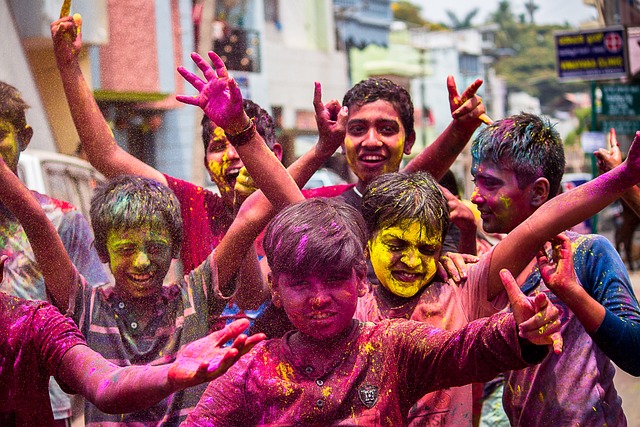
Holi Kab Hai? Know Holi 2025 Date, Tithi Time, Significance and Rituals
Posted on January 15, 2025
Holi, popularly known as the “Festival of Colors,” is one of the most vibrant and joyous festivals celebrated in India and across the globe by Hindu communities. It marks the arrival of spring and the triumph of good over evil. The festival, steeped in cultural and mythological significance, typically falls in the month of March, on the full moon day of the Hindu calendar month of Phalguna.
Holi 2025 Date: Friday, March 14.
Purnima Tithi Begins – 10:35 AM on Mar 13, 2025.
Purnima Tithi Ends – 12:23 PM on Mar 14, 2025.
Mythological Significance
Holi has deep roots in Hindu mythology. One of the most well-known legends associated with Holi is the story of Prahlad, a devotee of Lord Vishnu, and his demonic father, King Hiranyakashipu. The king, enraged by his son’s devotion to Vishnu, ordered his sister Holika to kill Prahlad. Holika, who had a boon to remain unharmed by fire, sat with Prahlad in a burning pyre. However, due to divine intervention, Holika perished while Prahlad emerged unscathed. This story symbolizes the victory of devotion and righteousness over arrogance and evil.
Another popular tale involves Lord Krishna and Radha. Krishna, playful and mischievous, celebrated Holi by playfully smearing colours on Radha and the gopis (cowherd girls), giving the festival its vibrant and colourful essence.
Rituals and Traditions
Holi celebrations begin with “Holika Dahan” on the eve of the festival. People gather around a bonfire, symbolizing the burning of evil and purification of the atmosphere. The next day, called “Rangwali Holi,” is when the real festivities begin.
- Playing with Colors: Friends, families, and strangers come together to smear each other with powdered colours (gulal) and splash water. It’s a time of fun, laughter, and togetherness.
- Music and Dance: Traditional songs, folk music, and Bollywood beats set the rhythm for energetic dancing and merriment.
- Festive Delicacies: Holi is also a culinary delight. Special treats like gujiya, thandai, dahi vada, and malpua are prepared and shared among loved ones.
- Community Celebrations: Many communities organize events like Holi parties, cultural performances, and processions, fostering unity and inclusiveness.
Significance and Modern Observance
Holi transcends religious boundaries and brings people together. It symbolizes forgiveness, the renewal of relationships, and the shedding of past grievances. In recent years, the festival has gained global recognition, with people of various cultures embracing the joy and camaraderie it offers.
While traditionally celebrated with natural colours, modern Holi celebrations often involve synthetic powders and water balloons. However, increasing environmental awareness has encouraged a return to eco-friendly practices, such as using herbal colours and conserving water.
Conclusion
Holi is more than just a festival; it is a celebration of life, joy, and unity. It invites people to embrace diversity, spread happiness, and revel in the beauty of togetherness. Through its colourful exuberance and timeless traditions, Holi continues to spread its message of love and harmony across the world.
